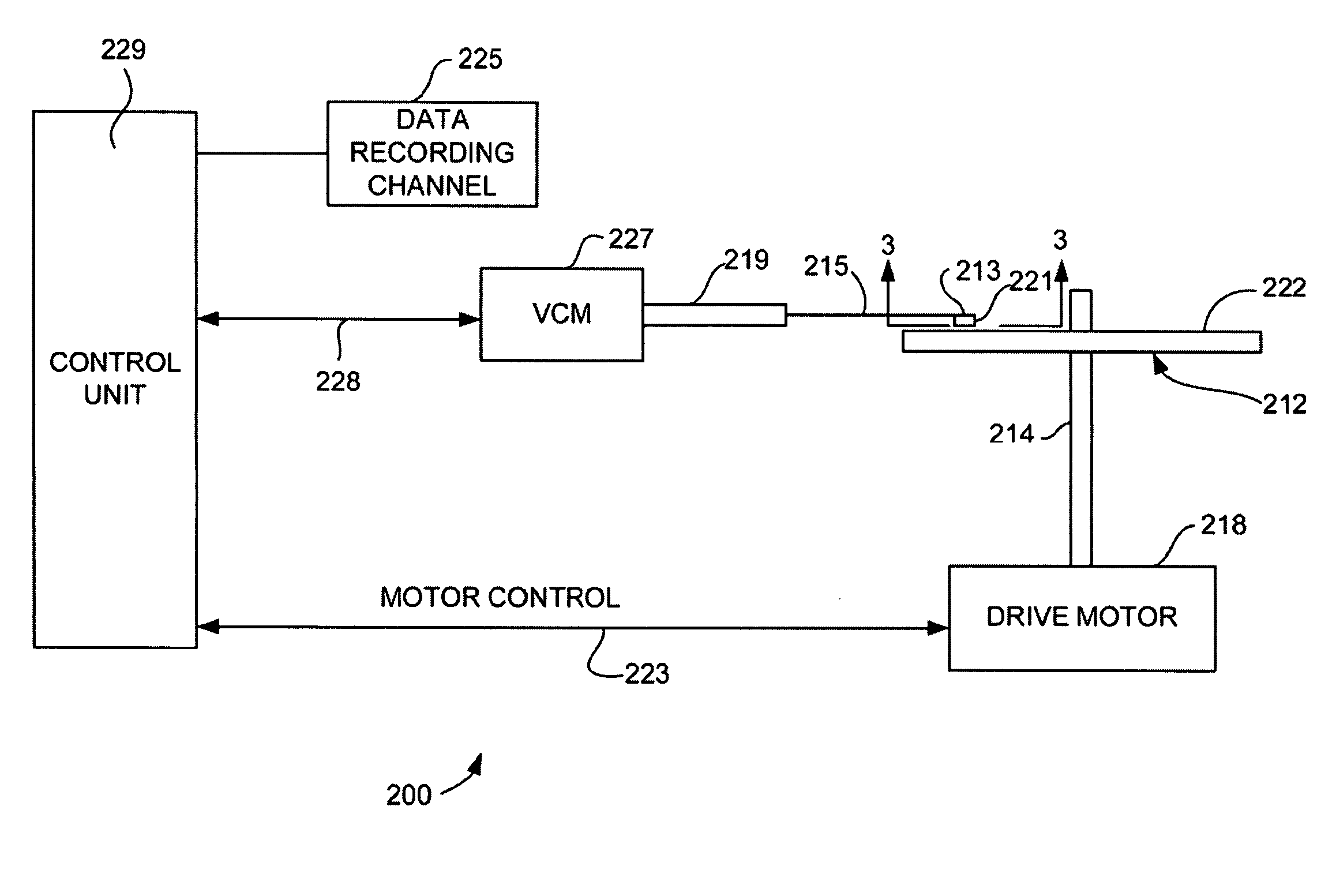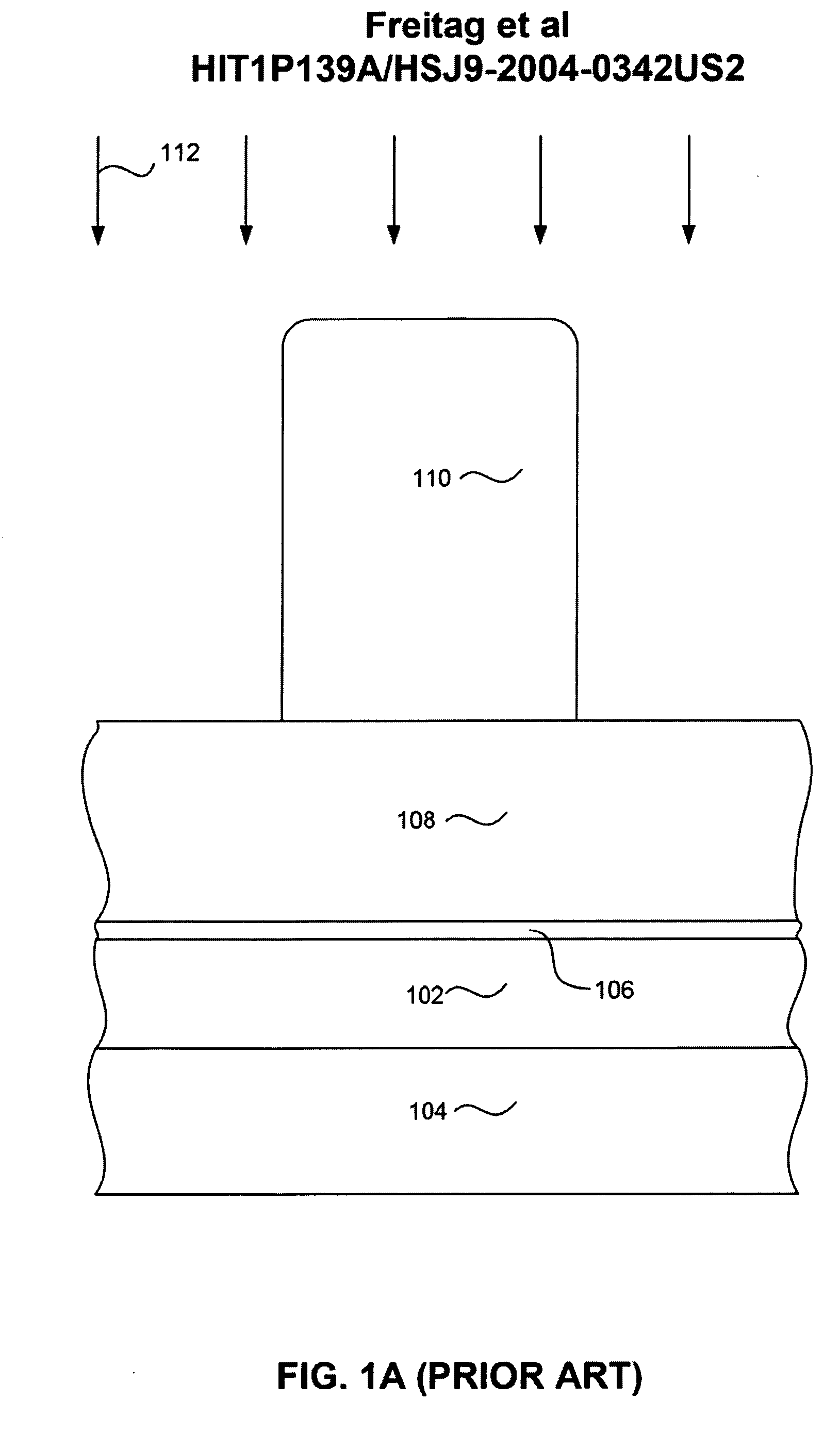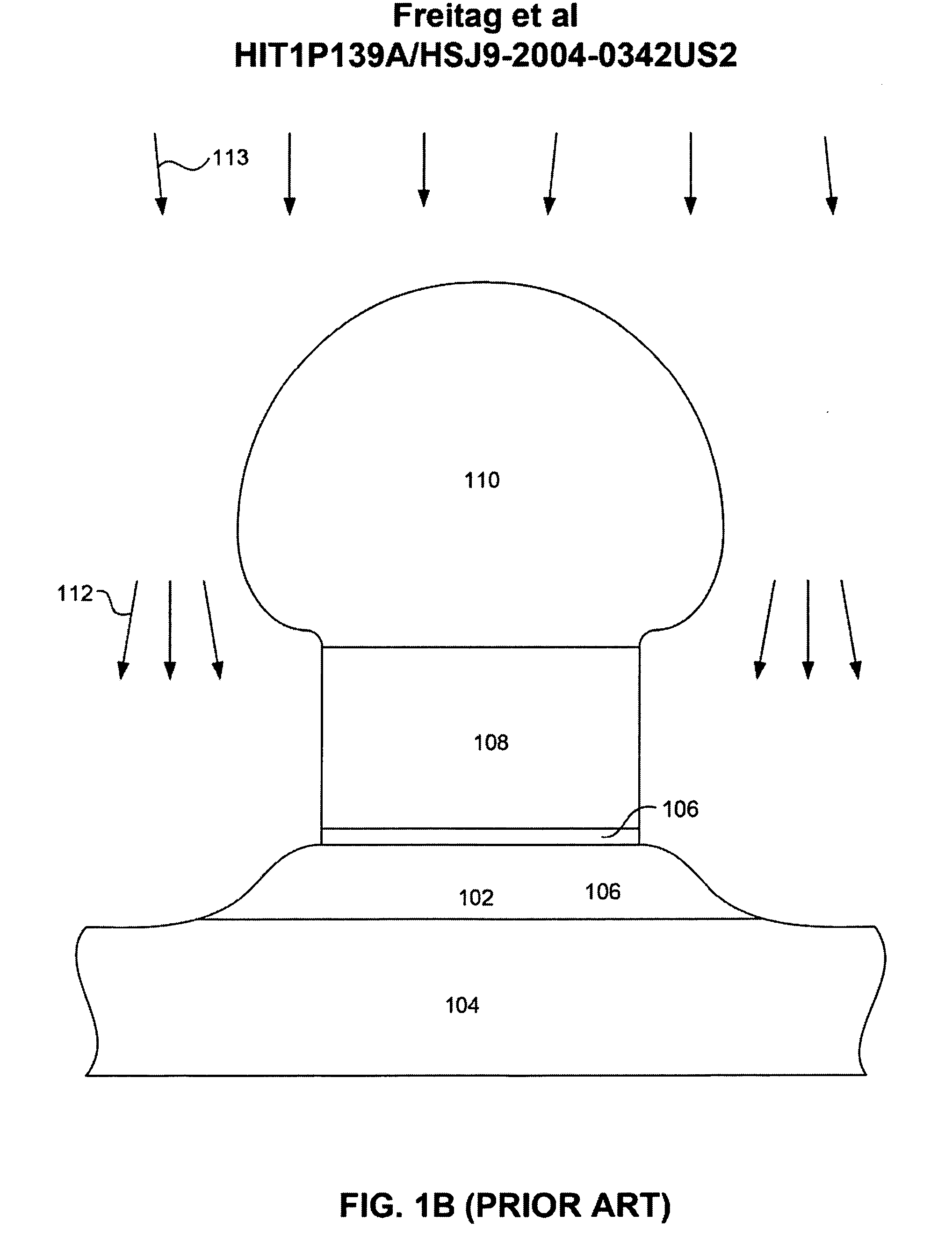Method for manufacturing a magnetoresistive sensor having a novel junction structure for improved track width definition and pinned layer stability
a manufacturing method and magnetoresistive sensor technology, applied in the field of magnetoresistive sensor manufacturing, can solve the problems of uneven material removal rate near the mask, not all ions travel in a direction, and poor track width definition, and achieve the effect of avoiding tapering
- Summary
- Abstract
- Description
- Claims
- Application Information
AI Technical Summary
Benefits of technology
Problems solved by technology
Method used
Image
Examples
Embodiment Construction
[0036] The following description is of the best embodiments presently contemplated for carrying out this invention. This description is made for the purpose of illustrating the general principles of this invention and is not meant to limit the inventive concepts claimed herein.
[0037] Referring now to FIG. 2, there is shown a disk drive 200 embodying this invention. As shown in FIG. 2, at least one rotatable magnetic disk 212 is supported on a spindle 214 and rotated by a disk drive motor 218. The magnetic recording on each disk is in the form of annular patterns of concentric data tracks (not shown) on the magnetic disk 212.
[0038] At least one slider 213 is positioned near the magnetic disk 212, each slider 213 supporting one or more magnetic head assemblies 221. As the magnetic disk rotates, the slider 213 moves radially in and out over the disk surface 222 so that the magnetic head assembly 221 may access different tracks of the magnetic disk where desired data are written. Each...
PUM
| Property | Measurement | Unit |
|---|---|---|
| power | aaaaa | aaaaa |
| power | aaaaa | aaaaa |
| platen power | aaaaa | aaaaa |
Abstract
Description
Claims
Application Information
 Login to View More
Login to View More - R&D
- Intellectual Property
- Life Sciences
- Materials
- Tech Scout
- Unparalleled Data Quality
- Higher Quality Content
- 60% Fewer Hallucinations
Browse by: Latest US Patents, China's latest patents, Technical Efficacy Thesaurus, Application Domain, Technology Topic, Popular Technical Reports.
© 2025 PatSnap. All rights reserved.Legal|Privacy policy|Modern Slavery Act Transparency Statement|Sitemap|About US| Contact US: help@patsnap.com



